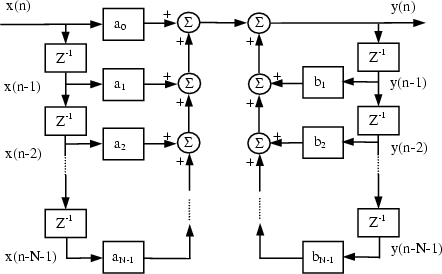Switched-Capacitor (SC) Power Converter
The ncreased density of integrated chips resulted in high power dissipation which is known as energy crisis in VLSI industry. In order to overcome this issue, power management techniques can be applied at the system, circuit or device level depending on the system complexity and nature of the device operation. DC-DC converters are one of the most important circuit level power management modules which convert an unregulated input DC voltage into an output voltage that is regulated at a given reference value for varying line and output loading conditions. Mainly, integrated DC-DC converters can be divided into three classes namely linear regulators, switch mode power converters and switched-capacitor power converters. In this paper, we aim at formal modeling and analysis of switched-capacitor (SC) DC-DC converters due to their robustness and wide application domain.
Infinite Impulse Response (IIR) Filter
Digital filters are fundamental components of almost all signal processing and communication systems. An impulse response of a system describes its behaviour under an external change (mathematically, this describes the system response when the dirac-delta function is applied as an input). Infinite impulse response (IIR) filters have an impulse response function which is non-zero over an infinite length of time. Given the filter specifications in terms of frequency response, the first step is to model the filter using constant coefficient difference equations. The next step is to express it in the form of transfer function using the Z-transform properties. Consequently, frequency response analysis and architectural optimization can be performed based on the given specifications. https://hvg.ece.concordia.ca/Publications/Journals/JAL18.pdf